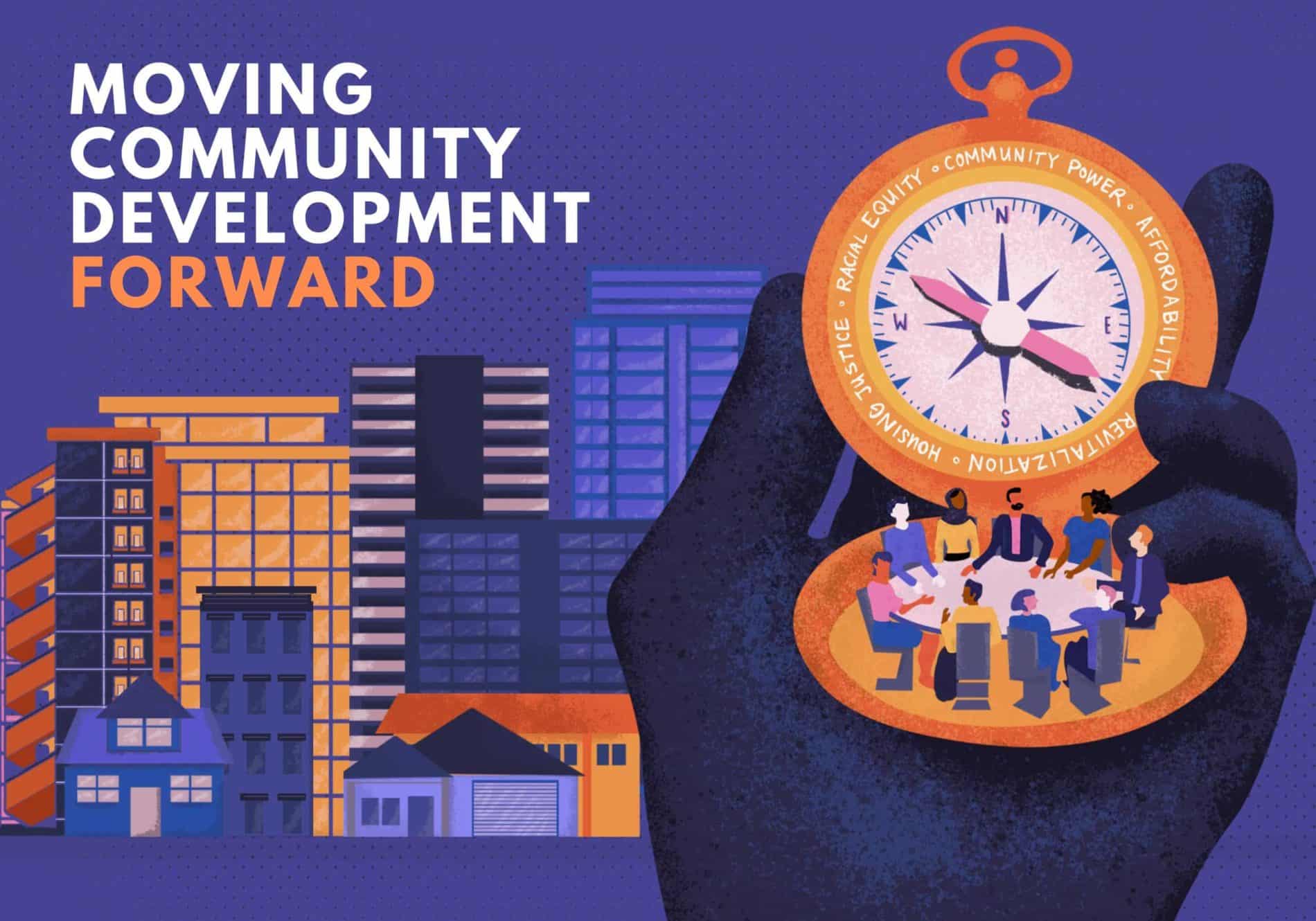New York City has everything, just like this bagel. Yum! The secret, as they say, is in the water. And water, as they say, is life.
But there’s a hole in the bagel, dear Liza, dear Liza. When I first came to NYC, still wet behind the ears and tasked with helping distribute money from Deutsche Bank’s foundation, I was sent to meetings. Lots of meetings. Very interesting meetings, where the community development banking luminaries of the day would hold court: Carol Parry, Phyllis Rosenbloom, Mark Willis, Marc Jahr, Bob Rosenbloom, Michael Feller, Greg King, Hildy Simmons, Gary Hattem. Or other meetings, where the United Way, Ford or Rockefeller called the tune, and the jolly members of NYRAG would troop in to talk about the inner workings of domestic microfinance, workforce development, educational reform, financial literacy, homeownership, arts and economic development, you name it. There was a palpable core of philanthropic leadership really focused on the challenges of the city, and they held significant mass. Their effect was gravitational: where they led, others followed. They drove discussion, led thinking, catalyzed partnerships, commanded attention. You may not have loved what they thought, or how they went about things, but their presence was manifest, and their impact was broad.
New York City still has the strongest and most vibrant philanthropic community in the country. It’s still provides enormous leadership in social investment strategies, community development finance, building public / private partnerships, and program innovation. But something has changed. Over the years, there’s been a growing vacancy in the focus on New York City itself: on its systems, challenges, nonprofit leaders, and neighborhoods.
In short, despite the incredible presence of philanthropic leadership and resource, the attention has moved elsewhere. I’m not sure that most folks have even noticed. It’s been a creeping drift, a steady ebb. A spreading hole in the center of our little everything bagel universe.
Hello, Cruel World
There are some darn good reasons for this, and there are also some sad realities. Major foundation leaders, having stuck by NYC through the 70’s and the 80’s, watched as the rise of Wall Street and major corporate partners emerged to have a big stake in the philanthropic life of the city. The banks in particular, with CRA obligations newly minted in the late 80’s, did some very creative work in advancing strategies for community development. And they got organized: building entities like the Community Preservation Corporation, the Mortgage Coalition, Neighborhood 2000 (now the Neighborhood Opportunities Fund), Living Cities, and a host of affordable housing finance programs in partnership with NYC’s Housing Preservation and Development – not to mention getting behind such entities as the New York City Housing Partnership, LISC, Enterprise and the Corporation for Supportive Housing. The Low Income Investment Fund and the Non-Profit Finance Fund blossomed. AMEX, AIG, Time Warner, the NY Times, and a host of other major corporations joined the fracas, and gave mightily.
As a result, I think major foundation leaders began to feel the the NYC market was crowded, perhaps even saturated. They began to cast about for issue areas and geographies where their resources could make a bigger impact, where the philanthropic territories were far less trodden, and where their ability to act as conveners and leaders would carry greater sway. To be sure, the needs of developing economies in other parts of the US and around the world were obvious and desperate, but the shift drew attention away from working in their own back yard. That was left to emerging corporate partners, and by and large the banks.
Ah, the banks.
Early on, various banking partners were already building specialities (like construction finance or economic literacy), which defined their leadership in relation to the sector. Then the wave of banking mergers and acquisitions in the 90’s and early 00’s (please say the word “aughts” when you read “00’s” – I think everybody should say “aughts.” “Aughts” is cool.) forced consolidations and displacements in community development banking. Teams were dissolved and rebuilt. Specialities shifted business lines and levels of priority. Management was moved away from local market leaders to regional or national heads. Thus began a fragmentation – one that has grown apace since the economic collapse.
Retrenchment. Reduction.
And I don’t think we’re at the nadir. NYC has not suffered as bad as many other cities in the economic collapse, but we’ve got our share of problems. Some real whoppers. Our symphony of voices is rather quelled, however, and there’s not really a “there” there anymore. Or, more appropriately, a “here” here.
A New Hope
I must credit the work of stalwarts like the New York Community Trust, which is ubiquitous in its philanthropy and which has managed to hold its own throughout these tumultuous times. Deutsche Bank has also maintained a strong local presence, as have many community development foundations like Altman, Heron, Gimbel, Surdna, Sherman, and others. A number of the banks still have local, though diminished, teams with respected individual practitioners. A special shout out my beloved friends over at M&T and the NY Women's Foundation, which continue to punch well above their weight in their service to the field. Fannie is hanging in there (Hang in there, Fannie!), and we must mention Robin Hood, which stands alone in its capacity. Ford and Rockefeller are still players here. Gates’ impact has been profound.
Yet, the center cannot hold.
And this presents an opportunity: where there’s a vacuum in leadership, there’s a moment for new leadership to emerge. What will Bloomberg’s philanthropy look like as he extends his legacy beyond his mayoral leadership? Will Helmsley Trust step up as they begin to define their role in the New York market? Can former local leaders rebuild teams gone dormant or diminished, and reclaim some of the territory now standing open?
I hope so. We need it. Really. Income inequality is no joke. Employment disparities, especially among sub-populations like young people of color, are horrifying. An emerging wave of distressed housing in neighborhoods hard hit by foreclosures is beginning to swell. And the schools—oh—the schools. I truly hope that new leadership emerges to pull us back together, to make the hole whole, and to commit the capital required for claiming (or reclaiming) the title of thought leader.
Photo courtesy of VanDerMouche via Creative Commons.





Comments